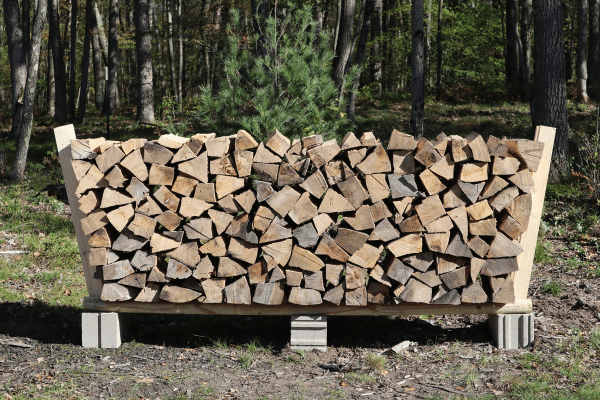
Introduction:
As the colder months approach, having a ready supply of firewood is essential for keeping your home warm and cozy. Learning how to maintain and store firewood yourself not only ensures a sustainable and cost-effective heat source but also contributes to the overall efficiency of your fireplace or wood stove. In this guide, we’ll explore practical tips for DIY firewood care.
Selecting the Right Firewood:
The first step in maintaining and storing firewood is choosing the right type. Hardwoods like oak, maple, or birch are ideal as they burn slower and produce more heat. Softwoods like pine or spruce are suitable for kindling but may burn faster. Ensure the firewood is properly seasoned, meaning it has been dried for at least six months to a year, to optimize combustion.
Cutting and Splitting Techniques:
If you’re cutting and splitting your firewood, it’s essential to follow proper techniques. Use a sharp chainsaw or ax for clean cuts. Split wood into manageable sizes, allowing for optimal drying and easy stacking. Smaller pieces also ignite more easily, making them ideal for kindling.
Creating a Dry and Well-Ventilated Storage Area:
A key aspect of firewood care is providing a proper storage space. Choose a location that is dry, well-ventilated, and protected from the elements. Elevate the firewood off the ground using pallets or a rack to prevent moisture absorption. Adequate airflow around the stacked wood promotes further seasoning and discourages mold or fungus growth.
Stacking Firewood Correctly:
Stacking firewood properly is an art that goes beyond aesthetics. Create a woodpile with evenly spaced rows and alternating directions to allow air circulation. This stacking method facilitates faster drying and reduces the risk of insect infestation. Keep the top of the stack covered with a tarp to shield it from rain while leaving the sides open for ventilation.
Regular Inspection for Pest Prevention:
Regularly inspecting your stored firewood is crucial for preventing pest infestations. Termites, ants, and other insects are attracted to damp or decaying wood. Discard any pieces showing signs of insect activity, and consider treating the surrounding area with insect-repelling substances to deter unwanted guests.
Maintaining a Safe Distance from the House:
While convenience is key, it’s essential to store firewood at a safe distance from your home. Placing the woodpile too close can invite pests into your living space and increase the risk of fire hazards. Aim for a location that is accessible yet maintains a safe distance to ensure both safety and convenience.
Using a Moisture Meter for Monitoring:
Investing in a moisture meter is a valuable tool for firewood care. This device measures the moisture content of the wood, ensuring it is adequately seasoned. Ideally, firewood should have a moisture content of 15-20% for efficient burning. Regularly check the moisture levels to guarantee your firewood is ready for use.
Rotating Stock for Even Use:
To maintain a consistent quality of firewood, adopt a “first in, first out” approach. Use older, seasoned wood first, rotating the stock to ensure all pieces are utilized efficiently. This practice prevents wood from becoming overly seasoned or, conversely, too green, ensuring a steady and reliable heat source.
Covering the Woodpile During Inclement Weather:
While proper ventilation is essential, covering the woodpile during severe weather conditions is equally important. Heavy rain or snow can saturate firewood, making it challenging to burn. Utilize a waterproof tarp to shield the top of the stack while still allowing for airflow along the sides. This protective measure preserves the quality of your firewood.
Maintain and Store Firewood Yourself:
Embrace the DIY spirit of maintaining and storing firewood yourself for a sustainable and efficient heat source. These practical tips ensure that your firewood remains in optimal condition, providing warmth and comfort during the winter months. Take charge of your firewood care to enhance both functionality and coziness in your home.
Conclusion:
By mastering the art of maintaining and storing firewood, you not only ensure a reliable heat source but also contribute to the sustainability of your home. Implementing these DIY tips guarantees a well-maintained and efficiently stored woodpile that will keep you warm throughout the winter. Make firewood care a rewarding and practical part of your cold-weather preparations.










